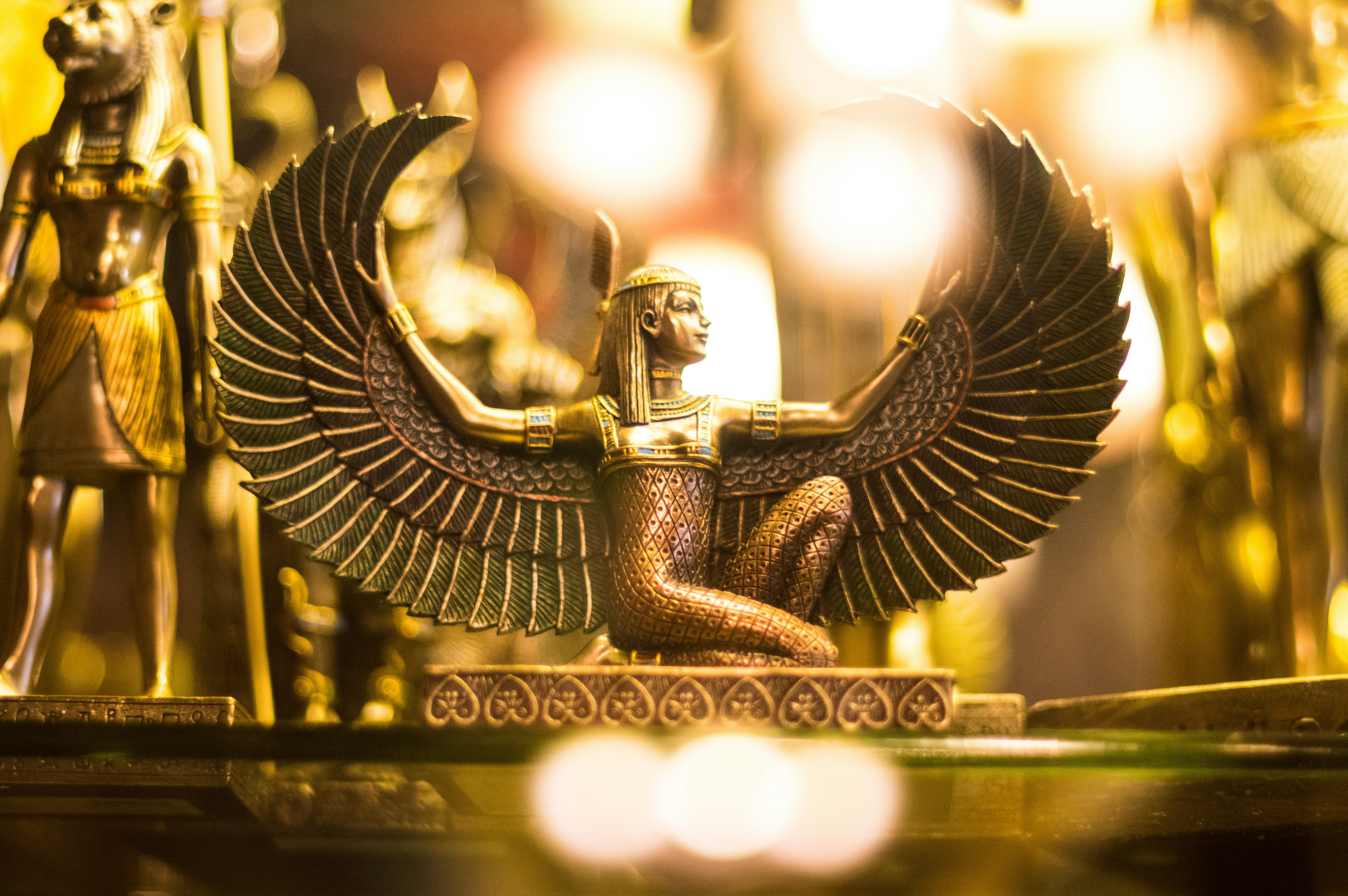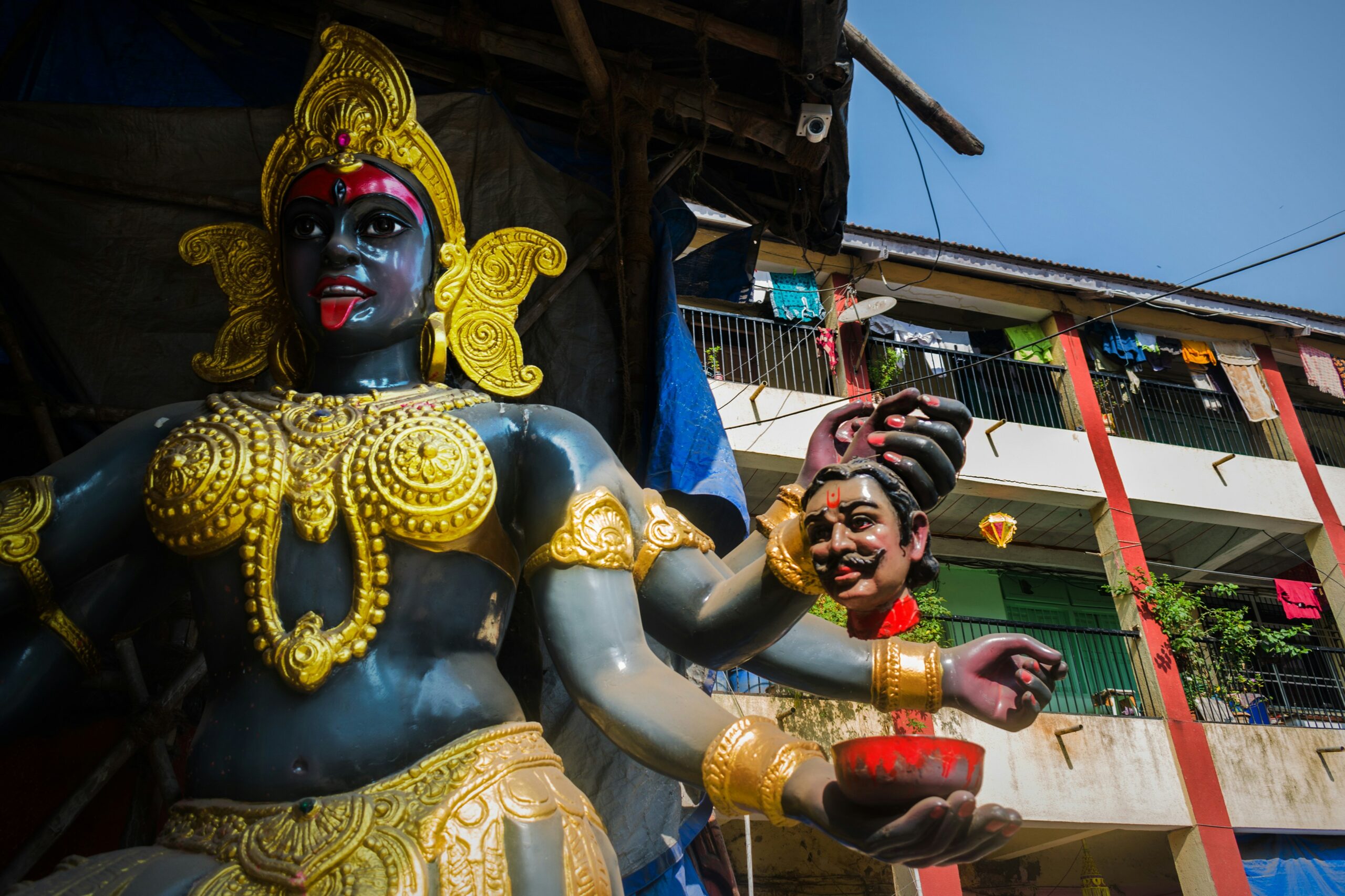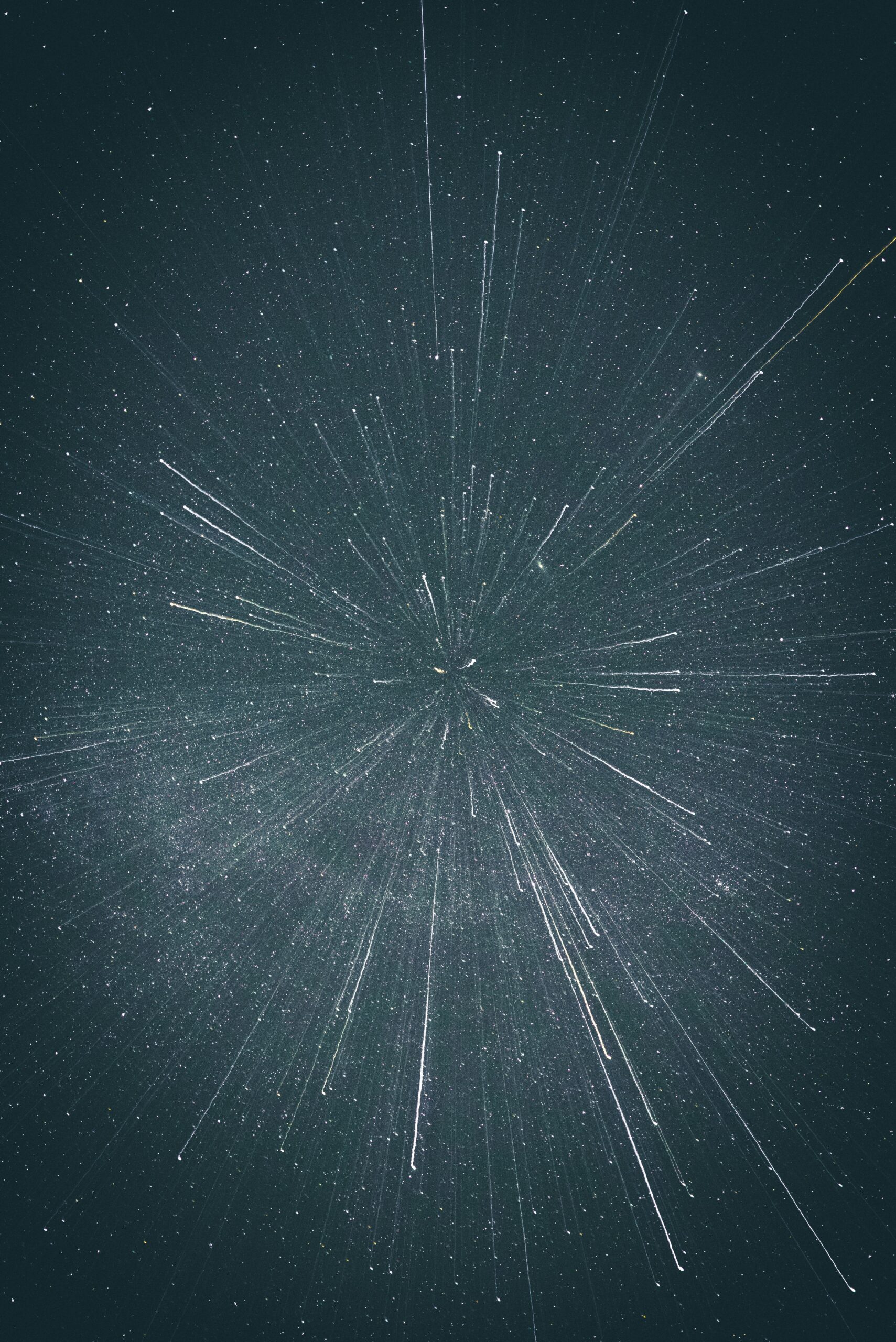By Mariella Story
A cosmic battle is raging between the armies of Good and Evil as far as the eye can see. Hordes of demonic forces crash and collide into rows of Holy warriors. Gods and Goddesses joining the battlefield are immediately lost in the chaos. One individual stands out: a single female figure aglow with a thirst for blood. With four arms wielding multiple weapons, she cuts a swath through the rabble and annihilates all in her path, making no distinction between the warriors of good or evil. The Gods themselves quake in helpless fear before all-powerful Kali, Goddess of Destruction and Eater of Time.
Kali’s fearsome visage remains burned in the minds of those who have seen it, yet devotees affectionately refer to her as ‘Kali Ma,’ or Mother Kali. If she is so frightening why have women and men called upon her for comfort, compassion, and unconditional love for over two thousand years? Few deities in human history have as complex a relationship with their acolytes as Kali. In today’s world, while patriarchal traditions are being challenged by feminine empowerment and Mother Earth is in ecological crisis due to humanity’s bloodthirst and greed, Kali is well worth examining as a symbol of unconstrained female power.
The prevailing origin myth tells the story of the Goddess Durga, Holy Warrior and supreme female deity of the Hindu pantheon, engaged in righteous combat against demonic forces set on her annihilation. Despite summoning legions of fellow deities and woman warriors to fight at her side, the Goddess was facing defeat. Just when all seemed lost Durga focused her energies in her third eye chakra, a sacred energy center between the eyebrows, and from it erupted Kali, fully grown and all-powerful. The twenty-five-hundred-year old Devi-Mahatmya scripture reads:
“7.5 From the knitted brows of her (Durga) forehead’s surface immediately
Came forth Kali, with her dreadful face, carrying sword and noose.
7.6 She carried a strange skull-topped staff, and wore a garland of human heads;
She was shrouded in a tiger skin, and looked utterly gruesome with her emaciated skin.
7.7 Her widely gaping mouth, terrifying with its lolling tongue,
With shrunken, reddened eyes and a mouth that filled the directions with roars.” (Odier 2016, 7)
Kali’s voluptuous body is nude, leaving her midnight-blue skin exposed to the natural elements. 20th century depictions of the myth softened Kali and depicted her as a beautiful youth, but in many origins she is a corpse-like ghoul with skin sagging off the bone. In both interpretations the Dark Goddess is adorned with a garland of decapitated male heads around her neck and a skirt of severed arms slung around her hips. Kali’s otherwise naked body is often dripping with gore and viscera from her slain enemies via the implements of death carried in her many hands: a trident, a sword, and a noose.
Upon her summoning by Durga, Kali deftly slayed all the Asuras (demons), targeting the demonic leaders Canda and Munda last. Canda unleashed thousands of arrows upon Kali alongside Munda, who showered her in an onslaught of thrown discus. Kali opened her gaping mouth, unhinging her jaw like a cobra, and swallowed the storm of incoming weapons before decapitating both attackers. Laughing madly, she then delivered their severed heads personally to Durga (Odier 2016, 8.) Despite completing her task, the Dark Goddess Kali did not choose to relinquish her powers and return to Durga’s third eye. She had become intoxicated with bloodshed and showed no sign of ceasing the rampage, instead turning her destructive powers upon the Gods. Quickly the Dark Goddess’s powers spread and began crumbling the very Earth, unraveling the fabric of reality. Kali thus revealed her form as the Eater of Time; the Void from which all living things emerge and inevitably return. In a final attempt to stop this monster of her own creation, Durga summoned her male counterpart and husband Shiva, one of three all-powerful Gods in the Hindu trinity, the ‘Trimurti.’ The mighty Shiva entered the battlefield and laid down upon the ground directly in Kali’s path. As the Dark Goddess raged forward her foot came to land upon Shiva’s reclining body, and she halted mid-step. Seeing her lover and male half powerlessly subdued beneath her feet, Kali abruptly ceased her violence.
Shiva’s physical surrender to Kali is the emphasis of the origin story and by far the scene most depicted in devotional artworks. In some retellings of the ancient myth Shiva lays upon the battlefield in sexual surrender, offering up his maleness in passivity and devotion. Kali straddles him in passionate intercourse amid the corpses of defeated foes and their physical union transforms her rage into joyful ecstasy. In other retellings, Kali is frozen in embarrassment when she finds herself stepping upon her lover and sticks out her tongue in a coy smile of bashfulness, breaking the cycle of her rampage and awakening her affectionate maternal aspect. Shiva is feared as much as adored for his powers of destruction, much like Kali. The significance of his surrender to a greater female force, and that surrender being an act of love, is central to many Hindu Tantric belief systems wherein the Universe’s female creative energies are placed sacred above all else (Tapasyogi 2014.)
In classical Western religions and mythologies most women who take action of their own accord are villains, such as Medusa and Lilith. Even powerful warrior Goddesses like Diana, worshiped by many, are virgins in service of a Patriarch (who is often their own father.) There are few self-empowered women to be found in any documented religions worldwide, with most females filling only secondary roles of Mother, Wife, or dutiful Daughter of the masculine hero. When for thousands of years female archetypes have been compartmentalized and minimized, Kali stands uniquely as a multifaceted symbol of feminine strength, anger, and sexual dominance.
Kali is a Goddess of special interest to contemporary feminists, spiritualists, and environmentalists around the world who work to challenge the oppression of vulnerable populations, and the continual degradation of our planet. Kali’s origin myth speaks to the need for unapologetic female action to destroy wickedness, as well as the apocalyptic potential of a raging natural force. In some esoteric Hindu practices, including Tantrism and Kundalini Yoga, devotion to the Goddess as Kali is essential to surrendering one’s egoic mind to the Divine and reaching a state of spiritual purity, or ‘Turiya.’ (Tapasyogi 2014)
“Mother Kali’s grace of destruction of ego awakens the timelessness of wisdom. … The mental state of any emotion is sacrificed into the Dark Goddess for Her to deal with. When we let go of our problem and worries in our surrender, the Goddess then is invoked as a fierce protector of us as a guide.” (Tapasyogi 2014, 56)
In Kali’s origin myth, when masculine (egoic) forces challenge the divine feminine (nature) she is left with no choice but to enact complete destruction until the divine masculine (enlightenment) surrenders himself to her and they join in a beloved union. Some 21st century feminists and environmental activists embrace this two-thousand-year old story as a guide to awakening a new conscious relationship with our planet, as well as our fellow humans.
The rise of unprecedented global natural disasters over the last two decades are inspiring philosophical changes to the Patriarchal belief that nature is ours to be claimed, used, and disposed of. Women and people of color are finding themselves aligned with Mother Earth’s violent protests against the centuries of abuse by the men in power, and the systems which have kept them there. Environmentalism and Feminism are fighting many of the same battles in the 21st century, and the Dark Goddess seems to have sensed it and reemerged into humanity’s collective unconscious.
Kali’s striking countenance is comprised of visual metaphors to communicate her powers of karmic liberation. Decapitated heads seen dangling from her neck, and sometimes carried by the hair in her bloody hands, represent the liberated egos of her followers. These egos have been readily offered up as sacrifice in exchange for ecstatic union with the Divine. Similarly, Kali’s skirt of severed arms represents the karmic weight once carried by her devotees. Their karma is now released and she carries it for them. The Goddess’s long tangled hair and nudity express her untamed natural sensuality and lack of self-conscious fear. Kali is often depicted dancing in funeral grounds in the company of jackals, both symbols of her connection to the death of the ego and the inevitability of time’s passing (Odier 2016, 11.)
A Goddess of great complexity, Kali is also an embodiment of Time itself, the immaterial force which both creates and destroys all. Her own name is a feminization of the Sanskrit word for Time: “Kāla” (Odier 2016.) The entirety of existence was born from Kali as the unmanifest state, or Void, which is represented by the dark blue-black complexion of her naked skin. As both the Cosmic Mother and Eater of Time, Kali Ma births existence from the dark Void of her womb, creating all that lives, only to eventually destroy and reclaim us all.
“As time, Kali consumes everything. No matter how painful or joyful an experience is, memory is all that remains of it. … Without death there is room neither for the newness of the present moment nor for the freshness of the future that is yet to arrive. Time is the yardstick by which we measure new beginnings, growth, evolution and endings.” (Chinnaiyan 2017, 30)
Desperate times call for desperate measures, and this Dark Goddess offers profound clarity of purpose at the price of a painful awakening. She has no patience for excuses or self-deceptions, and slices through both with a smile (Chinnaiyan 2017.) Simultaneously maternal and brutal, both creative and destructive, Kali embodies the complexities of the female experience in its entirety. Kali and radical feminist theory urge women to accept no half-truths or compromises and walk fearlessly in the battlefield of life. Now is the time to move through the pain and anger of oppression and activate those emotions into uncompromising change: To avert global catastrophe traditions discriminating against and devaluing the feminine must be abandoned or destroyed, for misogyny grows rampant at the root of Earth’s climate crisis. The patriarchal patterns of control and domination poisoning the air we breathe and the soil we stand upon are the same poisons womankind has been force-fed for thousands of years.
In the 21st century, individuals who identify and empathize with the Divine Feminine energies of life clearly recognize Mother Earth’s current need for healing. During the spring of 2015 an enormous artwork of Kali’s snarling face by renowned visionary artist Android Jones was spontaneously projected onto the Empire State Building in New York City alongside images of endangered and extinct animals (Synergetic Press 2015.) This is just one modern and profound example of the Dark Goddess surfacing as a muse and being embraced by humanity as a symbol of Mother Earth’s suffering.
Kali’s emergence in Western culture comes at a time when many of us are choosing to lose ourselves in entertaining fantasies and distractions in order to avoid facing the frightening realities of the present. She urges humanity to cut away our self-deceptions and limiting beliefs, whatever the cost. The demons we face are of our own creation, and only by transforming ourselves can we save our planet. We have only ego to lose, and everything to gain.
However, if we fail and existence as we know it crumbles, Kali Ma will be there to lovingly embrace us in the Void.
Works Cited
Odier, Daniel. Tantric Kali: Secret Practices and Rituals. Inner Traditions, 2016.
Stein, Diane. Essential Reiki: A Complete Guide to an Ancient Healing Art. Crossing Press, 2000.
Nandhi, Tapasyogi. Mastery of Consciousness: Liberate Yourself with Yogic Wisdom. BookBaby, 2014.
Chinnaiyan, Kavitha M. Shakti Rising: Embracing Shadow and Light on the Goddess Path to Wholeness. READHOWYOUWANT COM LTD, 2018.
“How the Visionary Art of Android Jones Connects Kali, Endangered Species and the Empire State Building.” Synergetic Press, 15 Dec. 2015, www.synergeticpress.com/how-the-visionary-art-of-android-jones-connects-kali-endangered-species-and-the-empire-state-building/

Subscribe to The Wheel Collective Newsletter
For weekly essays like this one, cool upcoming events, featured artists and more.



















